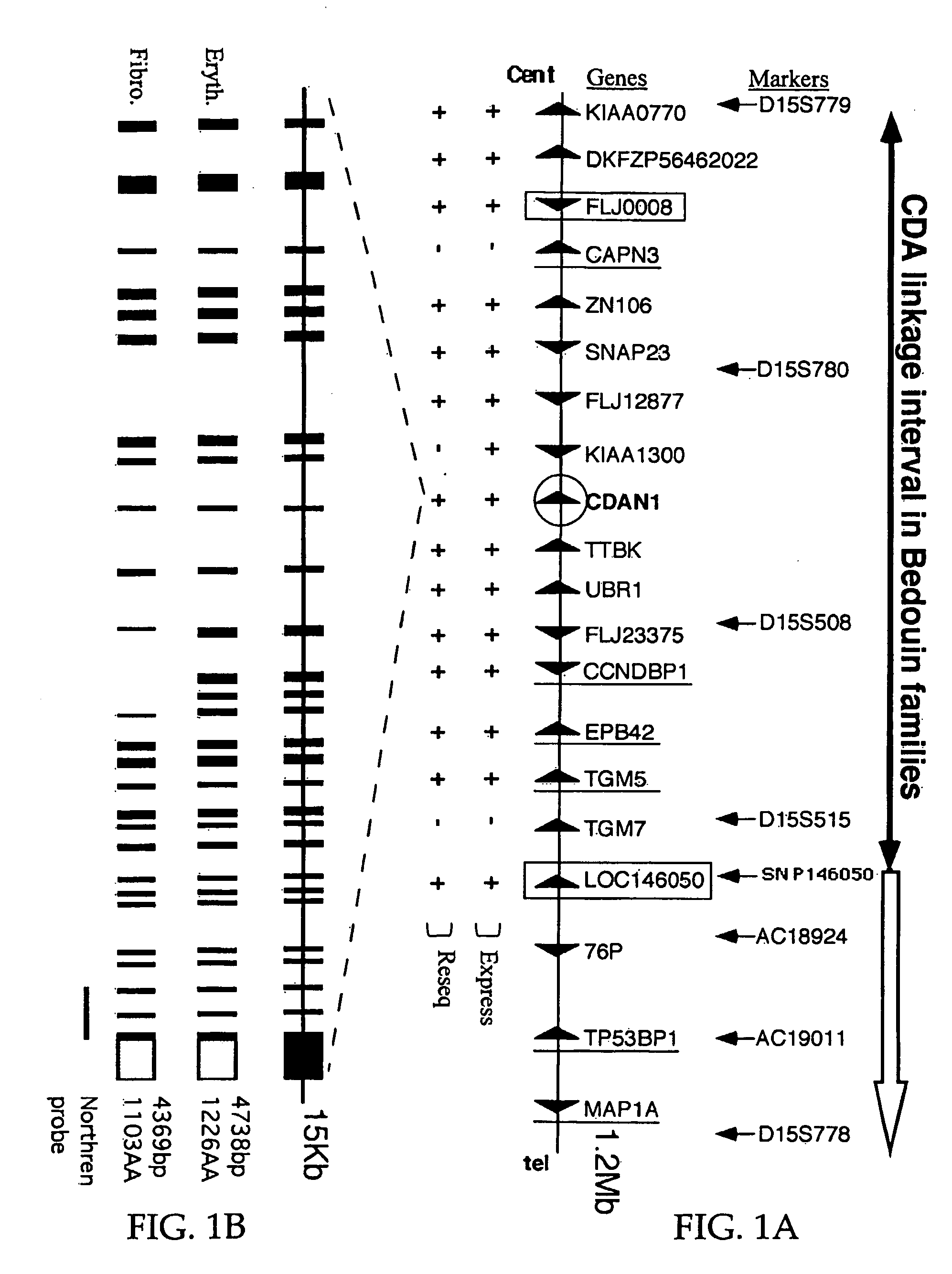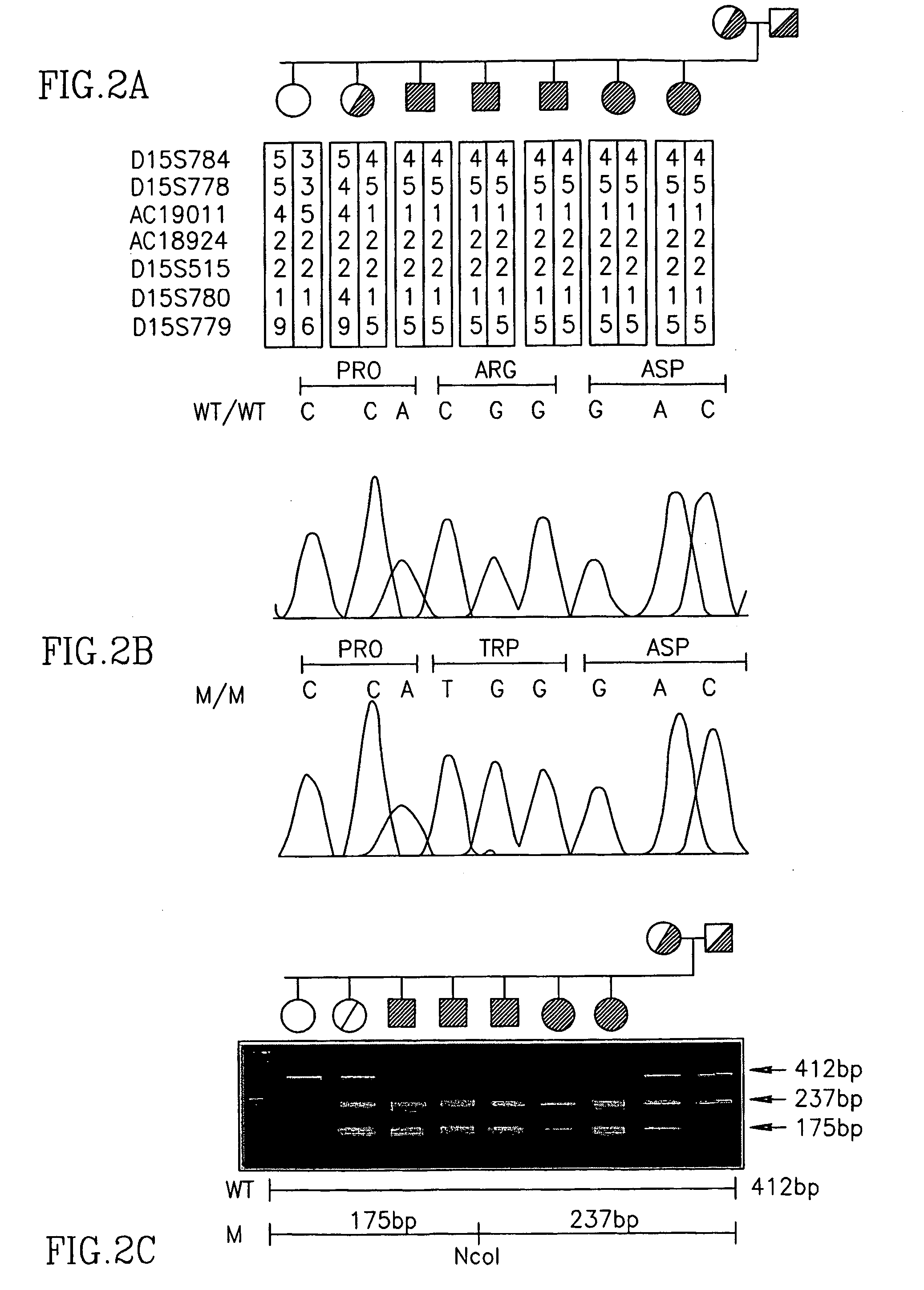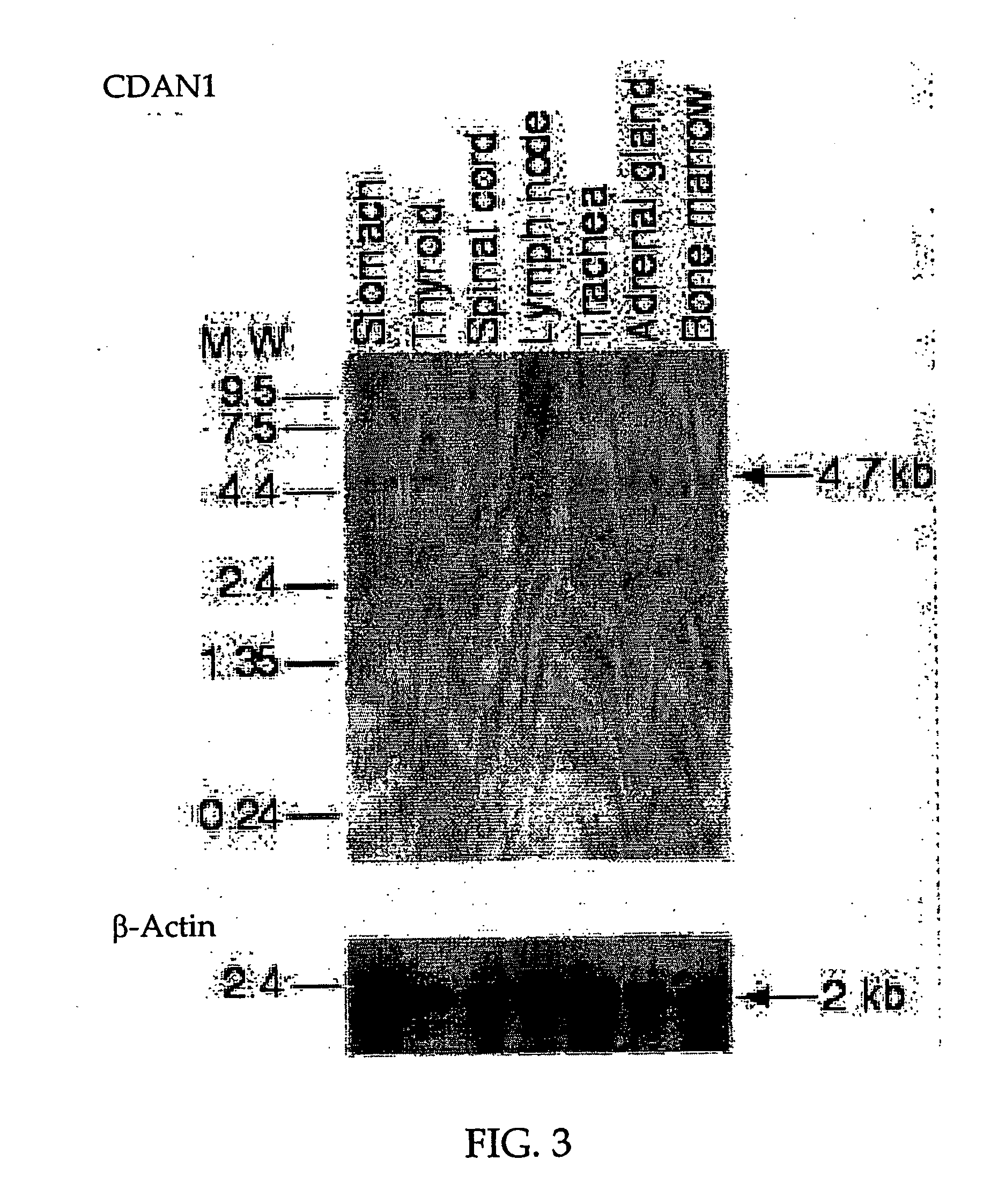Erythrocyte differentiation factor, gene encoding same, and methods of use thereof
a technology of erythrocyte differentiation factor and gene encoding, which is applied in the direction of drug composition, extracellular fluid disorder, peptide/protein ingredient, etc., can solve the problems of clinical dangers of abnormal differentiation/proliferation of red blood cells such as cda, and achieve the effects of promoting erythroid differentiation, promoting hematopoietic stem cell differentiation, and promoting erythroid differentiation
- Summary
- Abstract
- Description
- Claims
- Application Information
AI Technical Summary
Benefits of technology
Problems solved by technology
Method used
Image
Examples
example 1
Identification and Mapping of the CDAN1 Gene
[0086] Previously a cluster of 45 highly inbred Israeli Bedouin with CDAI enabled the mapping of the CDAN1 disease gene to a 2 Mb interval on human chromosome 15q15 (Tamary et al.-1998). Applicants have presently refined this interval to a 1.2 Mb interval, containing 15 candidate genes as detailed herein.
[0087] All patients showed a similar clinical picture and in all the subjects the diagnosis was confirmed by bone marrow electron microscopy. DNA was extracted from whole blood and RNA was extracted from the diagnostic bone marrow aspiration. All studies were approved by the institutional review board of Rabin Medical Center. Using new polymorphic markers from genomic clones (AC019011, AC018924), and an informative SNP within the defined transcript for the putative transcription factor LOC146050, Applicants refined the critical CDAI interval to 1.2 Mb (FIG. 1A).
[0088] In an attempt to identify the underlying mutations, a systematic in s...
example 2
Northern Blot Analysis
[0094] Northern blot analysis was performed with a cDNA probe for exons 26-28 on RNA from 8 different human tissues. The membrane was purchased from Clontech (BD Biosciences-Clontech) and was hybridized according to the manufacturer's instructions. The membrane was first probed with codanin-1 (Exons 26-28, FIG. 1B) and then subsequently reprobed with β-Actin cDNA as an internal control.
[0095] All tissues expressed the same 4.7 Kb band (FIG. 3A), suggesting that the gene is ubiquitously expressed and that the inferred mRNA is close to full length. A 369 bp shorter, alternatively spliced variant was found upon RT-PCR (data not shown) to be co-expressed in fibroblast cell line cultures from both CDAI patients and healthy controls, but not in erythrocytes. It is generated by in-exon splicing from exons 11 to exon 14 (FIG. 1B), that preserves the original reading frame. This mRNA isoform encodes a putative protein of 1103 amino acids. This major CDAN1 mRNA appears...
example 3
Multiple Alignment of Human Codanin-1
[0096] BLAST homology searches against several genomic sequence databases showed no obvious human codanin-1 paralog (SEQ ID NO: 1), but revealed two putative orthologs: one in the mouse syntenic region (84% identity) (SEQ ID NO: 2), and one in Fugu rubripes (44% identity) (FIG. 4) (SEQ ID NO: 3). Applicants also identified a putative ortholog in Drosophila melanogaster, (AF487678S2), which shares 23% identity with codanin-1. This protein, vanaso, has been proposed to be is involved in the fly's olfactory behavior, and is unlikely to be a functional CDAN1 ortholog. Codanin-1 has no clear intracellular location-specific domains, such as a trans-membrane or a signal peptide segments, it contains, however, numerous o-glycosylation consensus sites. In addition, the amino-terminal domain shares a significant homology with fibrillar collagens as revealed by FASTA (Pearson and Lipman, 1988) (FIG. 4). A multiple alignment was performed using the CLUSTALX...
PUM
 Login to View More
Login to View More Abstract
Description
Claims
Application Information
 Login to View More
Login to View More - R&D
- Intellectual Property
- Life Sciences
- Materials
- Tech Scout
- Unparalleled Data Quality
- Higher Quality Content
- 60% Fewer Hallucinations
Browse by: Latest US Patents, China's latest patents, Technical Efficacy Thesaurus, Application Domain, Technology Topic, Popular Technical Reports.
© 2025 PatSnap. All rights reserved.Legal|Privacy policy|Modern Slavery Act Transparency Statement|Sitemap|About US| Contact US: help@patsnap.com



